Adaptive Rock Climbing
Over the past four decades adaptive climbing, also referred to as paraclimbing has become increasingly more popular. With fine-tuned adaptive gear and the presence of experts in the sport, adaptive climbing’s opportunity for community, competition and commitment to adventure is finding its place in the indoor and outdoor climbing arena.
The first Extremity Games was held in 2006. This was the first event to bring together adaptive climbing, wakeboarding, BMX biking and skateboarding. Two years later, USA Climbing wanted to add an adaptive athlete category to their competitions. That same year the Teva Games created a venue for adaptive climbers, pros and able-bodied climbers to all compete on the same walls. Adaptive climbing was officially recognized globally in Paris in 2012, when the World Climbing Championships finalized an adaptive category. Adaptive climbers were now in the scene.
Paraclimbing Senders
Mark Wellman
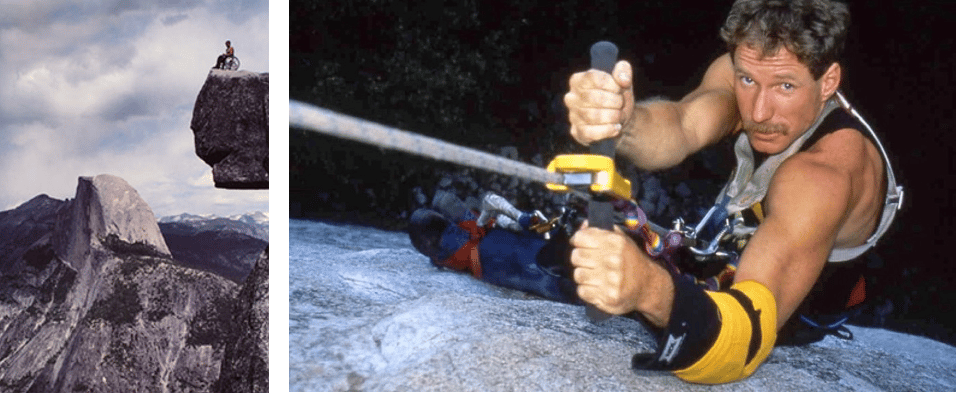
Left Image: Click here for resource
Adaptive climbing captured the public’s attention in July of 1989, with Mark Wellman’s ascent of the 3,0000-foot face of El Capitan, in Yosemite National Park. Seven years before in 1982, Mark survived a 100-foot fall in the John Muir Wilderness that left him with limited use of his legs, but this wouldn’t stop him from continuing to climb and adventure on.
Fun Fact: Mark’s El Cap ascent consisted of over 7,000 pull-ups in 8 days!
Click Here To find out more about Mark
Click Here To listen to a podcast about the roots of Mark’s non-profit No Barriers with the mission to help people tap into their inner hope, optimism and resilience.
Wayne Willoughby
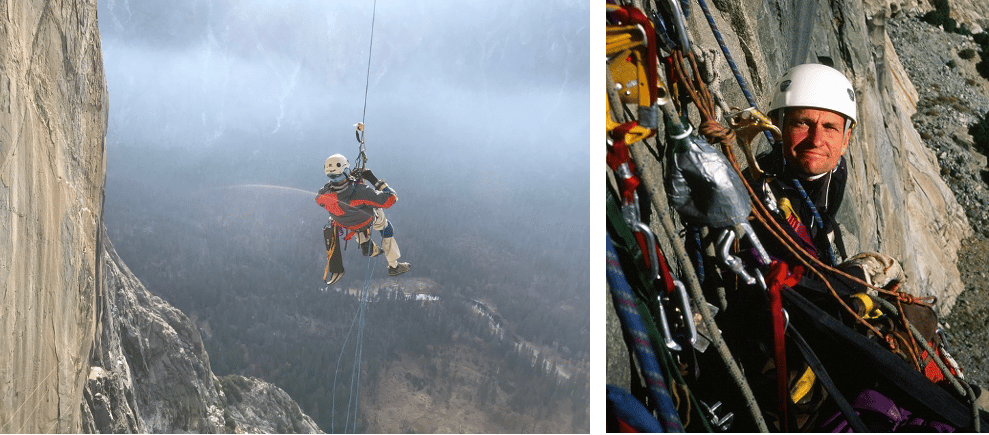
Left Image: Click here for resource
Contracting paralytic polio at nine-months old in 1953, Wayne lived through many difficult times. Beyond his challenges Wayne’s climbing achievements remain remarkable. He has a lengthy list of first adaptive climbing ascents. Wayne is driven by the bigger picture that adaptive climbing represents—teamwork.
A major achievement on his list is not only the fact that he has 25 El Capitan ascents, but in 2006 he was the first to achieve this feat in one single day.
Click Here To read an awesome interview by Common Climber with Wayne
Click Here To read an interview with Wayne and Men’s Journal
Sean O’Neill
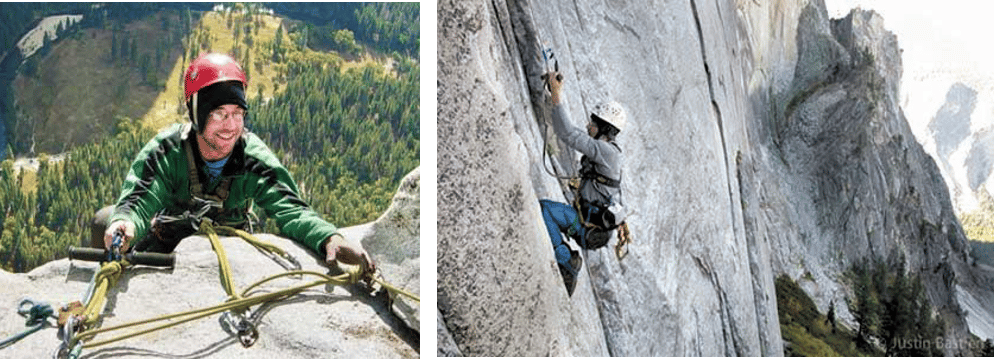
Left Image: Click here for image resource
At the age of 19 Sean was paralyzed from the waist down in a traumatic accident. In 2013, Sean was not only climbing big walls with his brother Timmy O’Neill but was the first paraplegic climber to get on the sharp end and lead climb a route. With his courage and “can-do” mindset, he continues to pave the way of opportunity to have climbing reveal that we all have being human in common.
“Sit climbers are already placing a high daily load on their shoulders, arms and hands. These limbs must last a lifetime. A good warm-up and proper hydration are important, as is listening to your body.” – Sean O’Neill
Click Here To experience Sean’s first ascent up El Capitan in Episode 4: Brother’s Wild of The First Ascents series by MNTN Films.
Quinn Brett
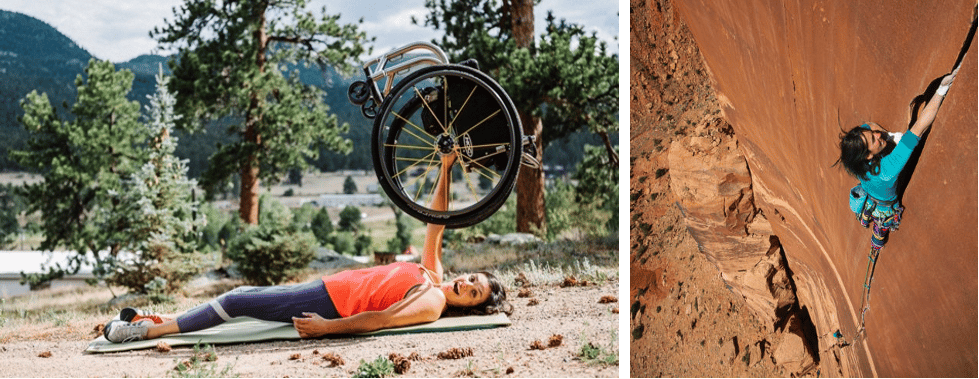
Left Image: Click here for image resource
In 2017, while climbing The Nose, in Yosemite, Quinn Brett was paralyzed from the waist down after she survived a 140-foot fall. She is an honest, vulnerable and compassionate advocate for living an adventurous and active life after SCI. She is an outspoken environmentalist, advocating to protect our public lands.
She is involved with United Spinal Association to promote advocacy, empowerment and independence for those who have survived a SCI.
Click Here to hear Quinn speak with the Climbing Greif Fund about the realities of life after SCI
Click Here for another awesome interview by Common Climber and Quinn Brett
Click Here to read a quick interview by Patagonia with Quinn
Rand Abbott
Rand Abbott is a veteran who is paraplegic. When he was in the hospital after his spinal cord injury he made a pledge to himself.
“My disability is not going to define my lifestyle.” Since then, he has completed over 500 first ascents in Joshua Tree.
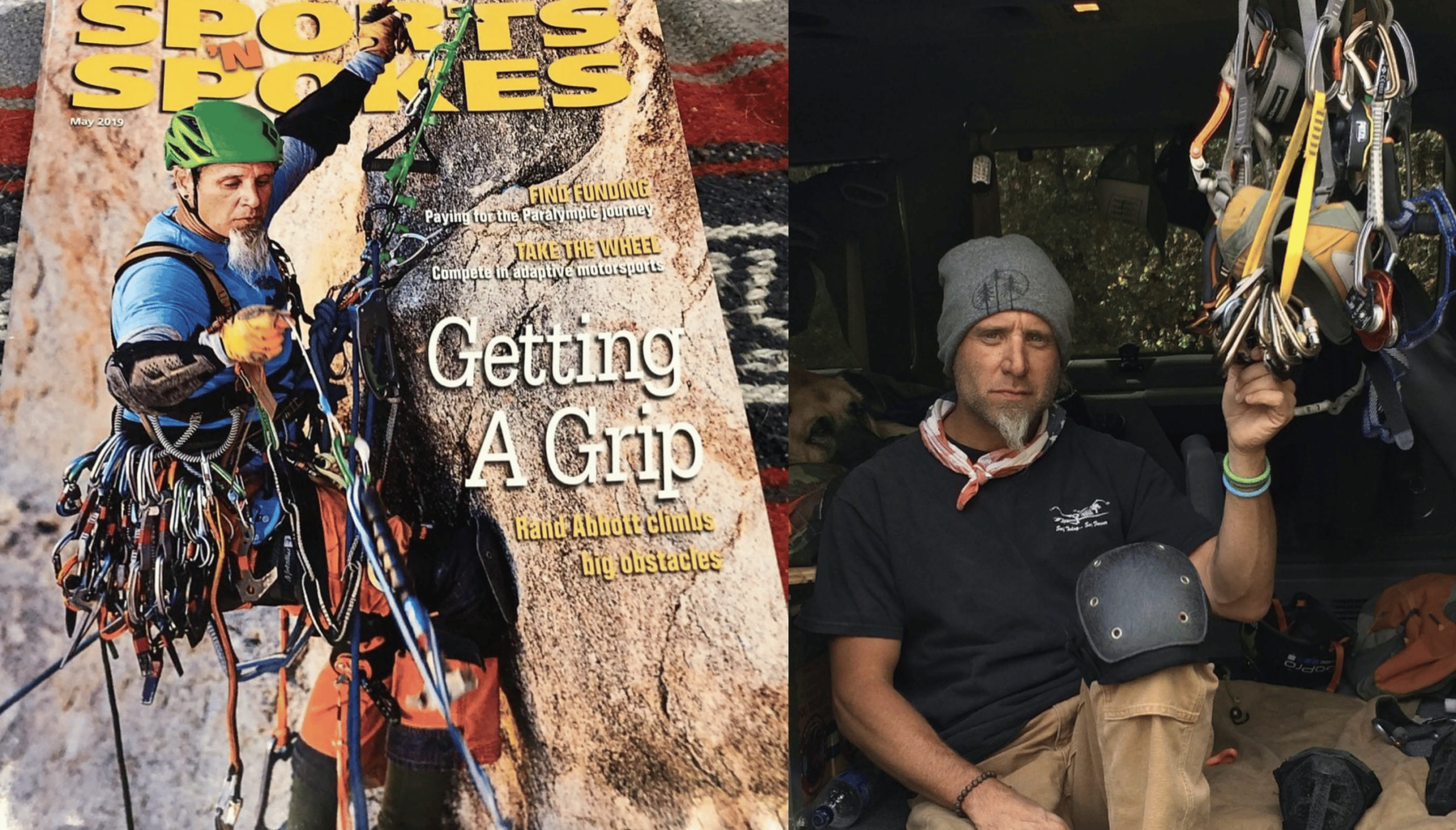
Adaptive Equipment
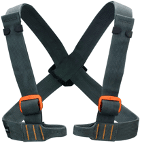
Chest Harness
Help keep climber secure and upright (Clinical Guide)
Can have custom harness to better distribute weight
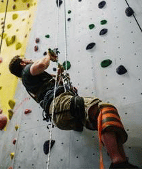
Sit Harness
Paraplegia, incomplete quadriplegia, or those with limited use of legs. Usually used in combination with a chest harness to help keep climber stable and upright and optimize mechanical advantage. Majority of weight in sit harness to allow for full respiration. Larger waist belts and leg loops help prevent pressure sores.
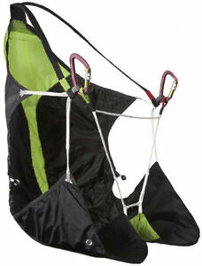
Adapted paragliding Harness
Full seat as well as leg, chest and shoulder straps
(Needs full-strength tie-in and suspension system suitable for climbing)
Misty Mountain Easy Seat Harness
Padded seat with an integrated sit and chest harness
Rigid seat decreases potential for pressure sores
Good option for rope climbing with mechanical advantage systems
Misty Mountain ARC Harness
Thickly padded harness and full back support
Active Hands
A glove-like gripping aid that Velcroes into position
Alternative: Garden gloves
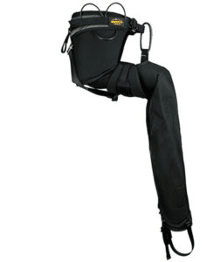
Padded Rock Chaps—with an integrated harness
Mark Wellman designed these for added protection from buttocks to ankles
Alternative: Double layer or chainsaw chaps
Ascender Pull Up Bars– Mechanical Advantage Pulley System
Enables movement up the route through a locking mechanism
3:1 mechanical advantage
Innovative Climbing Wheelchairs!
HighRoller
Brad Zdanivsky is a climber who suffered a spinal cord injury leaving him quadriplegic. He and his father built this chair to assist in his many ascents, including the 1000-foot Grand Wall of the Chief in British Columbia in 2003 and 2005.
Click Here to watch a short video on Brad and his HighRoller
Reclining Chair and Harness System
Steven Wampler is the first climber with Cerebral Palsy to ascend El Capitan with his invention of the reclining chair and harness system.
Click Here to watch Wampler’s Ascent, a film following his journey up El Cap.
Amputee Paraclimbing Senders
Here are some amputee senders:
Hugh Herr
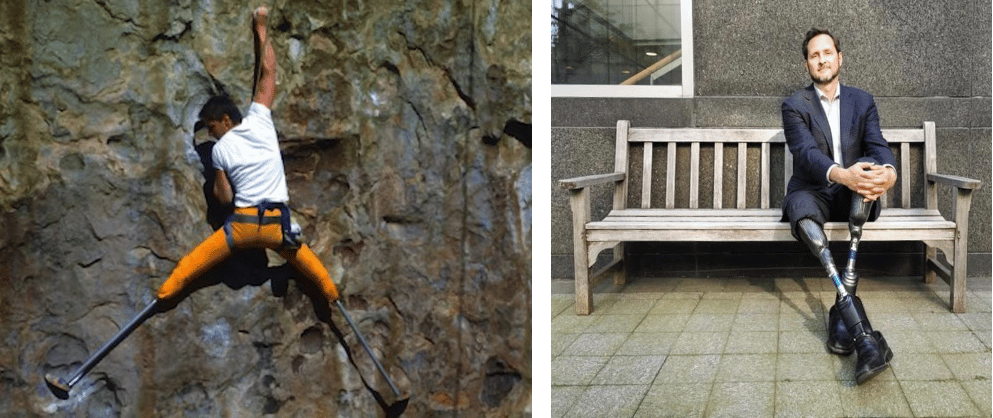
Left Image: Click here Right Image: Click here
Hugh Herr has significantly impacted the climbing world. In 1982, at the age of 17, he and a friend were ice climbing when they became trapped by poor weather conditions. After being found multiple days later he had severe frostbite in both legs and later had them amputated.
Since then, he has revolutionized prosthetics at MIT and continues progress the prosthetics world to meet the needs of adventurous outdoor enthusiasts.
Click Here To listen to more of his story
Craig DeMartino
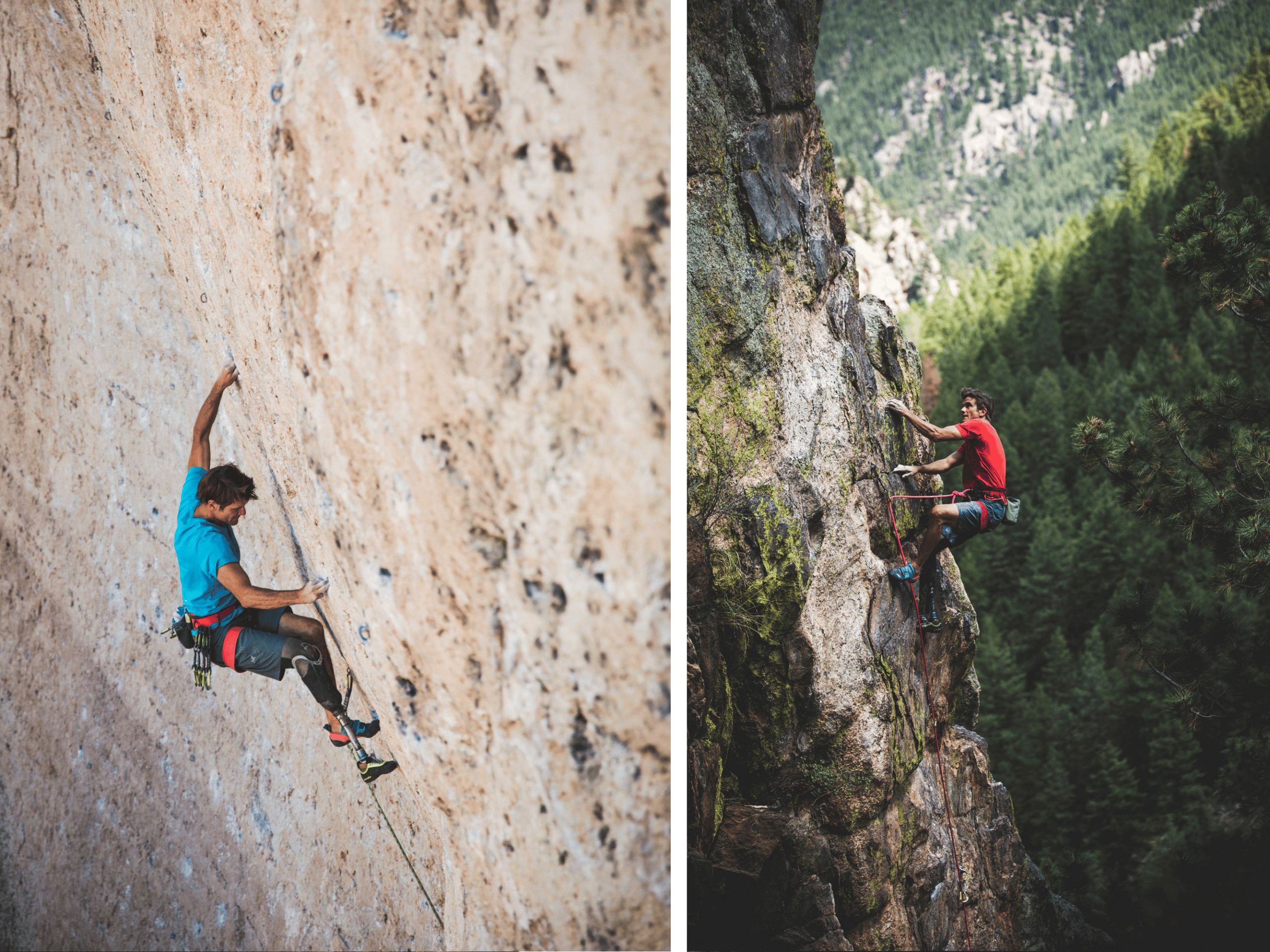
Left and Right Images: Click here
Craig DeMartino was accidentally dropped 100 feet while climbing in CO. That’s the same height as a 10 story office building. He endured a three-month stay in the hospital and later a rehab facility where he began to rebuild his life and body. After 18 months, he decided to amputate his leg below the knee to return to climbing, and the quality of life he once enjoyed.
Since then, he has gone on to set amputee speed records on El Capitan and has medaled in the paraclimbing national and world championships.
Click Here to see more about his story
Click here to follow him on social media
Click here to learn more about his non-profit work teaching climbing to people with physical disabilities
Maureen Beck
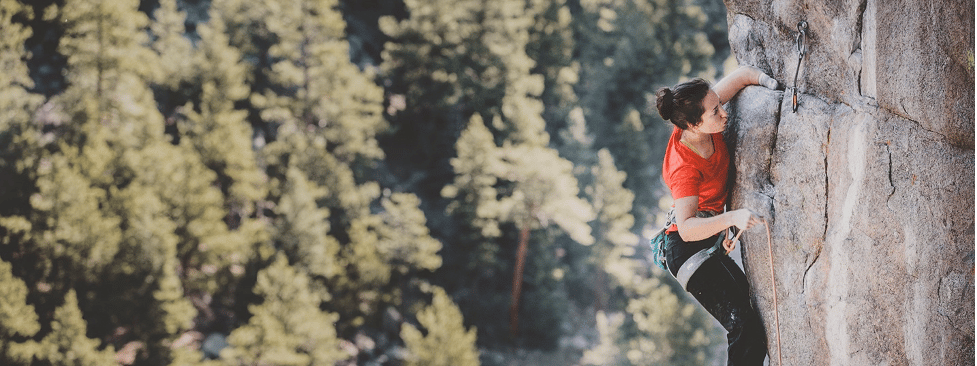
Image: Click here for resource
Maureen was born without a left hand, but this didn’t stand in her way of becoming a world-renown climber. She has won multiple titles including a gold medal at the 2014 Paraclimbing World Championships in Spain and a gold medal at the 2016 World Championships in Paris. In 2019,
Maureen was named one of National Geographic’s Adventurers of the Year.
Click Here for a quick video on Walls are Meant for Climbing with Maureen
Click Here to listen to a Podcast with Maureen
Click Here for the trailer to Maureen’s film Stumped
Ronnie Dickson
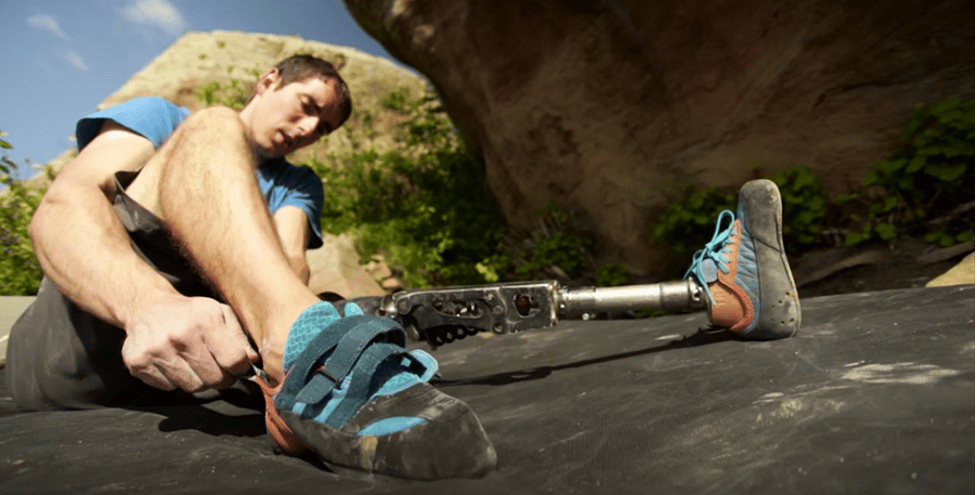
Ronnie had an above the knee amputation at the age of 17 after many years of suffering from Trevor’s Disease, a congenital bone disorder. In 2007, Ronnie dove into the climbing world and fell in love. In 2014, Ronnie took home the silver medal at World Paraclimbing Championships and in that same year became the first above the knee amputee to send a V10 boulder project, sending Resident Evil in Joe’s Valley.
He is an inspirational speaker, currently works in a prosthetics lab and climbs with the Range of Motion Project, a non-profit dedicated to providing prosthetic care to those without access.
Click Here to watch the story behind the V10 send by Ronnie Dickson
Click Here to read Ronnie’s story of why he climbs with ROM project
Click Here to read Ronnie’s personal climbing blog
Lower Extremity Prosthetics
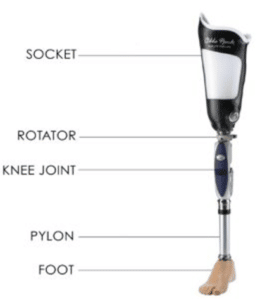
Socket:
The part of the prosthetic that attaches to the residual limb.
For the Climber: Customized to be lower in the back to allow for better access for high-stepping.
Pylon Tube:
The metal pipe that provides structural support to a leg prosthesis. This connects the socket to the knee or foot component.
Foot:
Prosthetic feet are designed to flex in the forefoot and add spring to a person’s foot this may be too flexible for climbing.
For the Climber: Mount prosthetic foot backwards and walk on the walking heel of the foot
*Remember walking off the climb will then be very difficult so having crutches or a cane is important
Prosthetic Set-Ups
Full-Length
A prosthetic foot at the end of a long pylon
Stubby
Prosthetic foot directly under the socket or on a short pylon
Helps bring center of gravity closer to the wall
Used for bilateral amputations
Klippa:
A prosthetic inspired by mountain goats designed specifically for climbers by Kai Lin

Click Here To explore the Kai Lin’s inspiration to create this prosthetic
Upper Extremity Prosthetics:
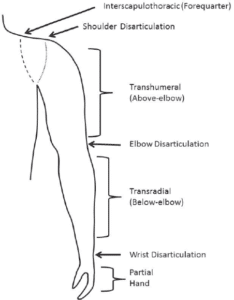
The main difference between upper and lower extremity prosthetics the use of a terminal device rather than a foot. This segment of the prosthetic requires hooks or other accessories needed to function as a hand or fingers.
Types:
- Partial Hand/Wrist
- Below Elbow (Transradial)
- Above Elbow (Transhumeral)
- Shoulder Disarticulation
- Bilateral UE Amputation
Climbing-specific upper extremity terminal devices:
SCALO: Prosthetic Climbing Arm
This prosthetic aims to be malleable enough to uniquely fit the climber, light-weight and easy to manipulate.
This mimics the grip of a hand to facilitate better use of the arm for climbing
Some climbers prefer to wrap the residual limb in athletic tape rather than climb with a prosthetic
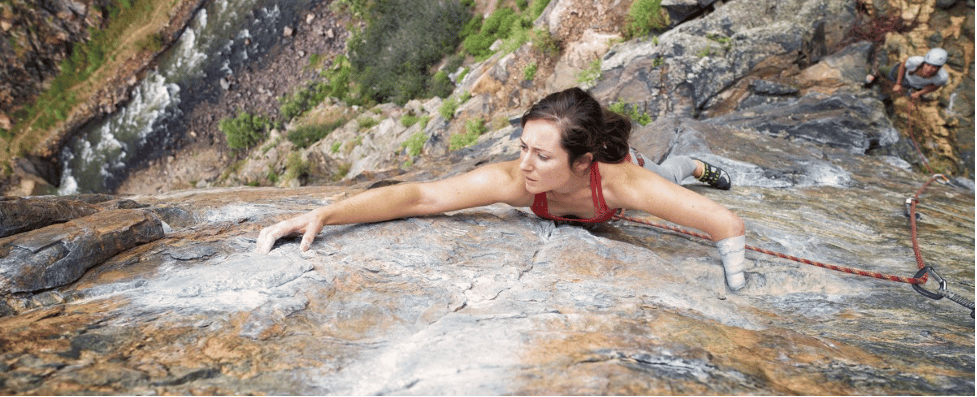
Tips to maintain longevity of adaptive climbing:
Pressure Sores:
For paraclimbers with paralysis pressure sores are a common injury that could lead to weeks of missed climbing
How to Prevent:
- Select the correct harness to avoid aggravating skin integrity
- If skin is feeling irritated at all stop climbing
For paraclimbers using prosthetics the residual limb moves in the socket and cause skin sores
How to Prevent:
- Consistently check the residual limb and keep clean and dry.
Temperature Sensitivity
For amputee paraclimbers temperature sensitivity of residual limb can cause phantom pain.
How to prevent:
- Pay attention to phantom limb pain and remove prosthetic, dry off residual limb and have hand warmers nearby.
Overuse Injuries:
Assisted Top-roping and Campusing
- The use of only the hands and arms pulling up the lower body
- How to modify activity to prevent over-use injury:
- Utilize your friends with an assisted belay (“power-belay”) where the belayer can provide as much assistance as needed
- Anchor a static rope next to the route. Use this rope to pull past difficult moves (may use an ascender here).
- Use sit-harness in part of your climbing session.
Climbing with Hemiplegia or Hemiparesis
- How to alter the climbing technique to avoid over-use injury:
- Benefit from a friend as a side-climber. They can help move a foot or a hand if needed.
- Power belay as stated above.
- Static rope as stated above.
- “Scumming” or smearing the hip against the wall can take some of the weight while the climber moves the hand or foot.
- Gently using the chin or head for balance while shifting center of balance.
Prosthetics have the potential to fall off while climbing
How to Prevent:
- Girth-hitch a sling around the prosthesis and clip into harness to prevent the prosthesis from falling
About the Author
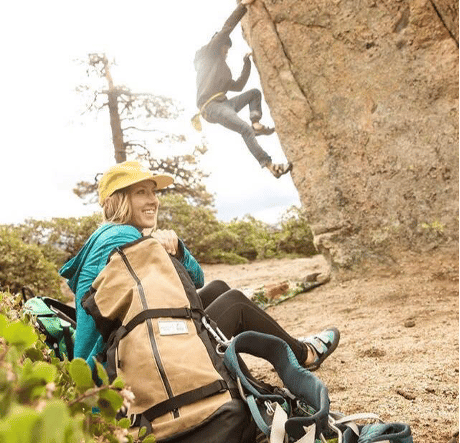
Shawnee Wood is a third year DPT Student at Regis University. Before graduate school, Shawnee received her BS in Neuroscience from Regis University in 2012, where she played four years of college soccer. After this experience she began traveling and teaching yoga abroad through Central America and Southeast Asia. She also guided high school students traveling through Southeast Asia, climbing and playing soccer. Shawnee found a love of working with the neuro-rehabilitation population through volunteering at an adaptive surf camp as well as volunteering at the adaptive ski school, Achieve Tahoe, for multiple seasons. She is passionate about the outdoors, moving the body and getting people back to the things they love.
Contact Info:
Email: Shawneecwood@gmail.com
Instagram: @Woodchipper3
References
- Adaptive Climbing: A Manual for Instructors and Climbers. Boulder, CO: Paradox Sports; 2015.
- Vagy J. Climb Injury-Free: A Proven Injury Prevention and Rehabilitation System. The Climbing Doctor; 2018.
- Disclaimer – The content here is designed for information & education purposes only and the content is not intended for medical advice.

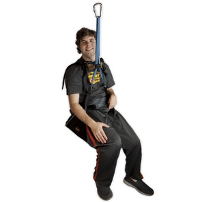
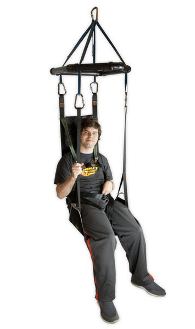
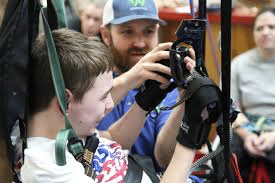
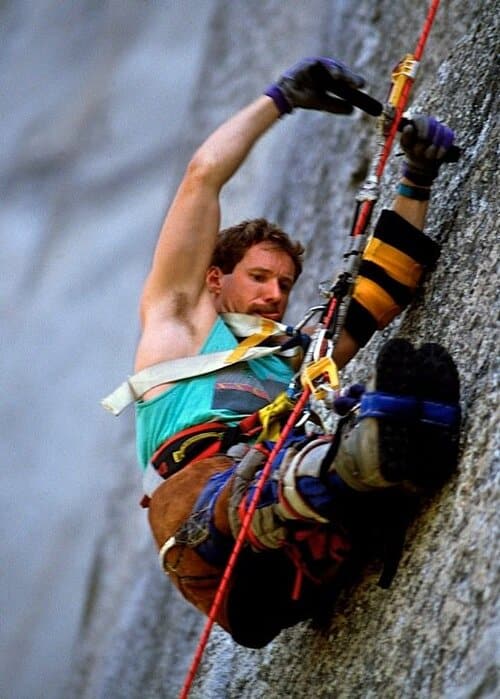
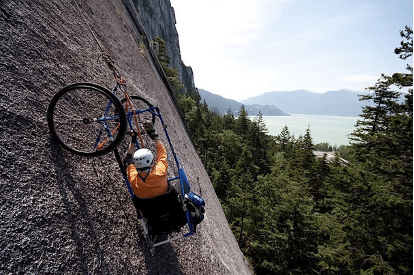
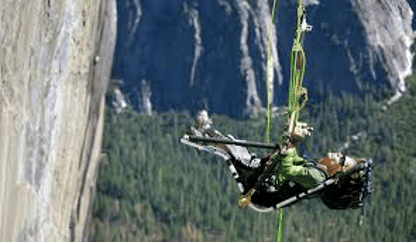
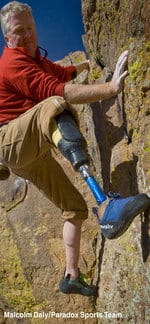
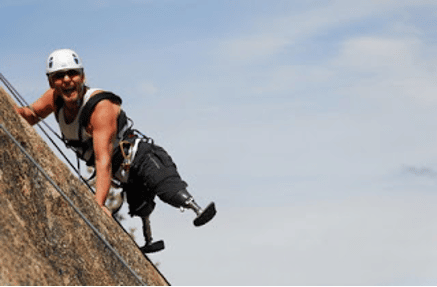
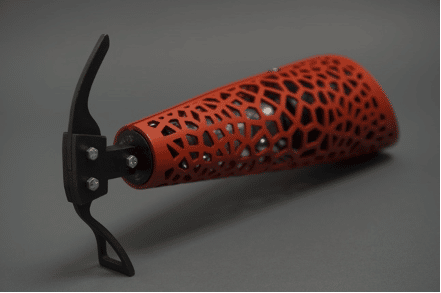
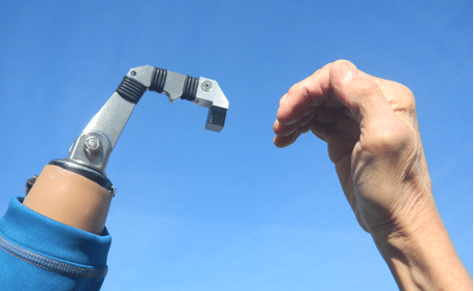


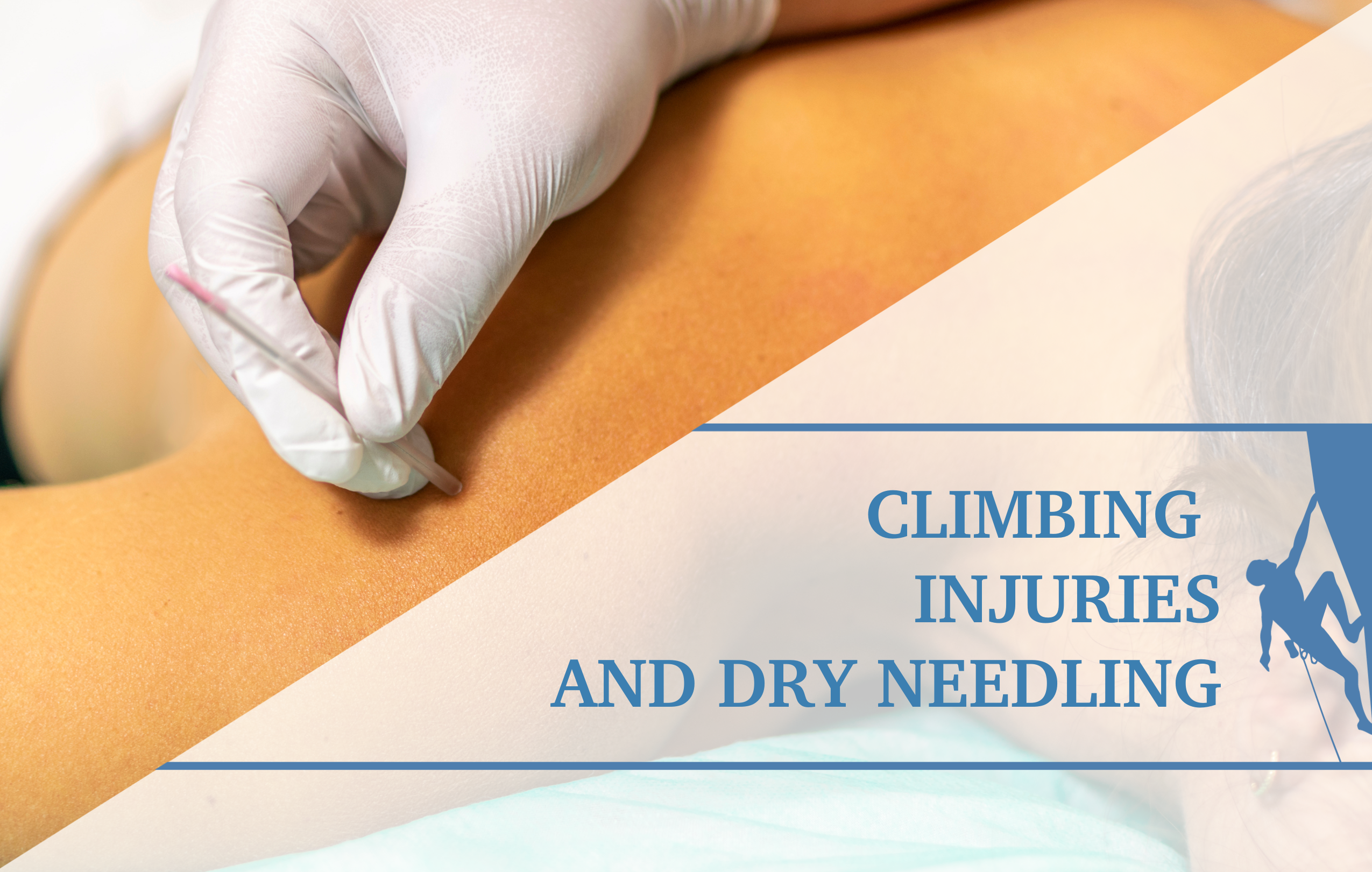
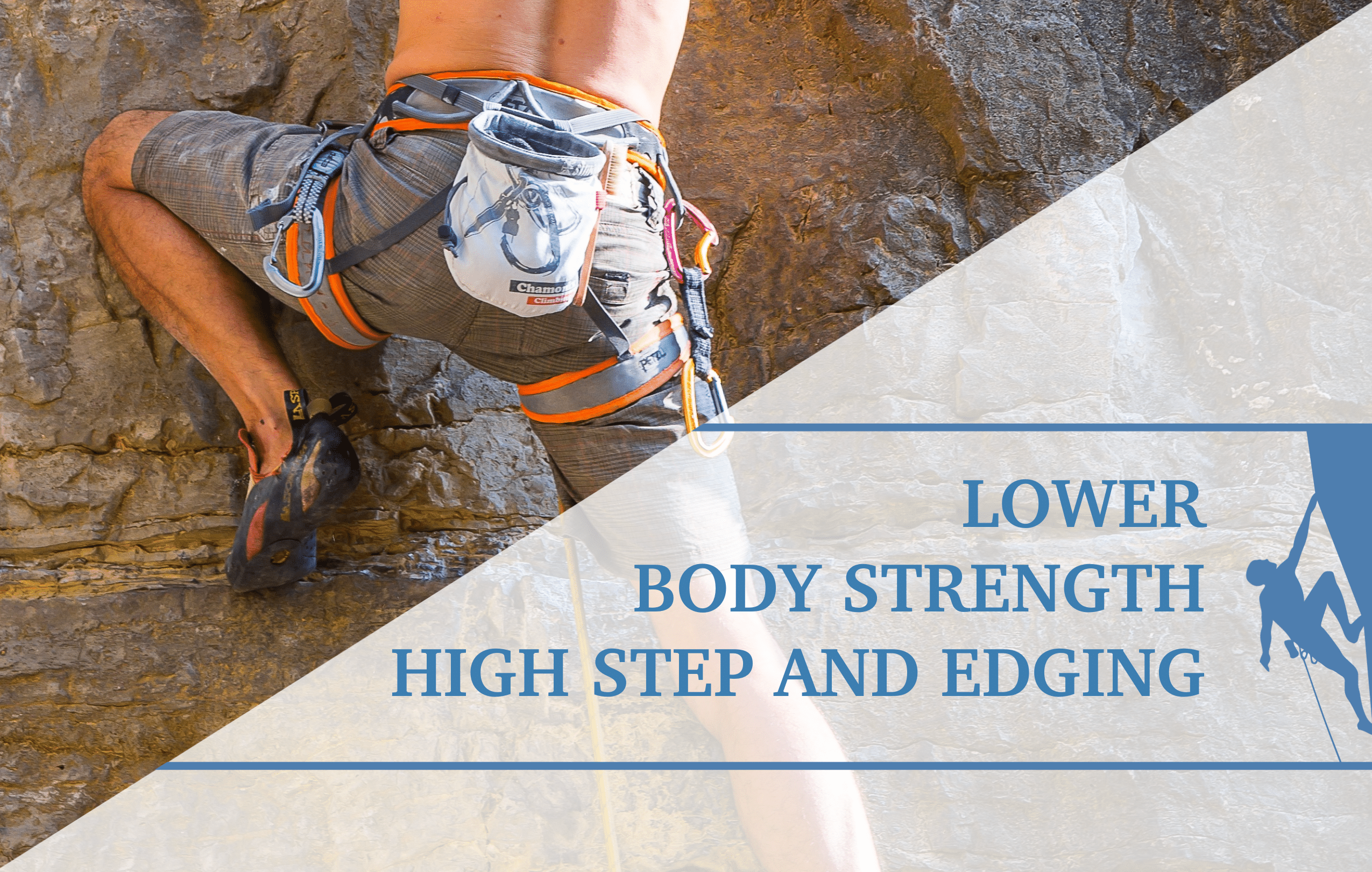
Rand Abbott isn’t mentioned?
Hey Greg, good catch. I just added him.